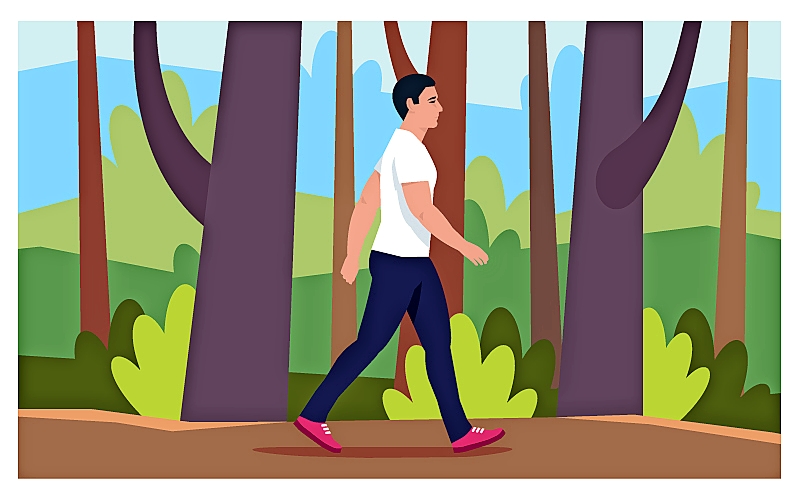Mindful Movement
By Naperville Magazine
Appears in the May 2020 issue.

By Jodi Trendler
Forest bathing is a mindfulness-nature connection practice that was popularized beginning in the 1980s in Japan, where it is known as “shirin-yoku.” There are myriad benefits to the practice, including reduced blood pressure, heart rate, cortisol levels (meaning lower stress) and risks for heart disease, anxiety, depression, weight problems, impairment in memory and concentration. Mentally practitioners report an improved sense of wellbeing, attention and focus, as well as reduced anger and hostility.
Forest bathing allows us to connect with all of our senses through interaction with our natural environment, and essentially synergistically combines the benefits of mindfulness with the benefits of nature connection.
By following a series of mindfulness-directed “invitations,” or interactions with the natural environment, we reconnect with and awaken all of our senses. Because of the stressful lives many of us lead, we’ve lost touch with the ability to pay attention to the important information we can gain from all of our senses. Often people go to bed or wake up sore or stiff because they haven’t paid close enough attention to the signals their bodies were trying to tell them throughout the day. Our current tendency is to just ignore that sore neck, back, or arm and carry on with our day instead of taking a few minutes to stretch and relax. If we are able to notice these messages when our bodies try to communicate them, we can allow ourselves to take breaks and address potential problems, which will help us avoid developing chronic conditions.
Forest bathing is a wonderful practice to undertake because it is accessible to anyone regardless of age or ability as long as they are able to get to a natural environment. Those with disabilities find it particularly beneficial as a wellness practice because of its accessibility. There are three types of mindfulness invitations which can be done on a weekly basis during a short walk, generally less than a quarter of a mile. The benefits of forest bathing walks can last for up to several days when done on a regular basis. Try it once a week for a month and see what you notice.
What’s in Motion?
Direct your attention to notice the many things that are in motion around you: birds, bugs, bicycles, clouds, leaves, and shadows. If your attention drifts from the intended focus, redirect your focus back to what is in motion. This allows you to train your mind to maintain its ability to focus; similar to lifting weights, it will improve over time the more you practice. As you develop a practice of forest bathing and continue to visit the same location frequently and consistently, you will even begin to notice changes over time.
Bear Sense
As you continue your journey, deepening your connection to the natural environment, a nice invitation in this sequence to help awaken your senses is to focus on your sense of smell using your “bear sense”—practice noticing the various smells you can detect as you walk. Take special notice of the direction the smell is coming from, how strong the scent is, and how your body reacts to it. You may even choose to spend some time in one place, such as a favorite bench or grassy area, to enjoy this invitation.
Connect with a Tree
A wonderful conclusion to your walk is to take a few minutes to connect with a tree or favorite plant. This involves touching, holding, sitting or standing against or near a tree that you are feeling drawn to. It may be the way the tree looks, smells, is shifting light, controlling temperature, or just captures your attention that draws you to it. This practice helps you become more fully aware of all of your senses as well. As you spend time with the tree, notice how your body reacts while in connection—this can be a very profound, cathartic experience for some, energizing or relaxing for others, and it can also be different each time you visit.
Illustration by Ievgenii Volyk


